World Cuisine and Fermented Foods with Koori Atsuko
Aug 05,2021
World Cuisine and Fermented Foods with Koori Atsuko
Aug 05,2021
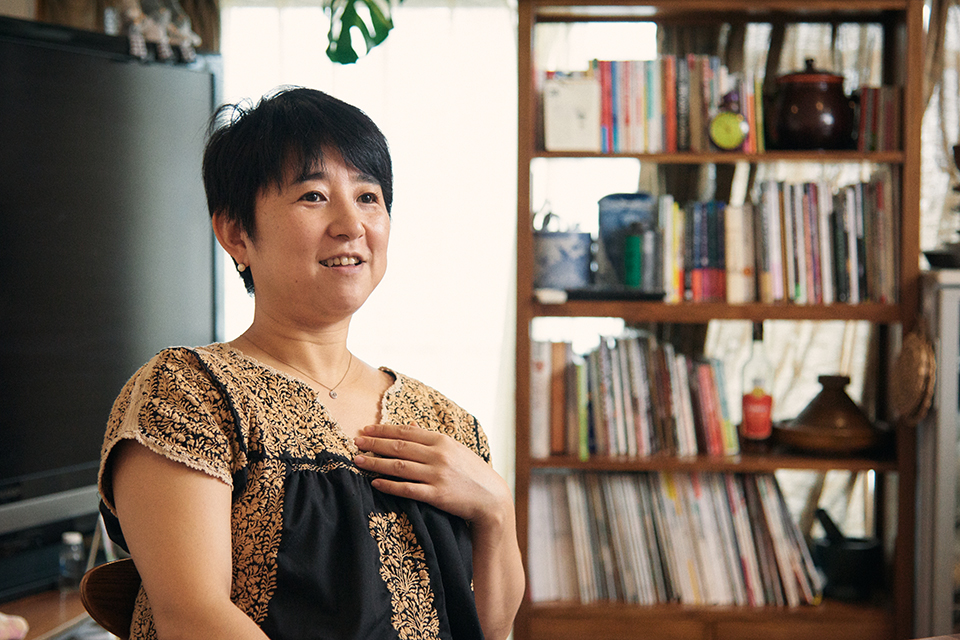

When food planner Kori Atsuko isn’t working on menu development for a well-known Japanese soup bar, she keeps busy studying different cuisines. Having explored the world’s food cultures on her travels, she now puts that experience to good use by giving cooking classes and workshops. We asked her about the fermented foods she’s encountered across the globe and what makes them appealing. She also told us how she gets the most out of a trip.
The bookshelves in Atsuko’s workshop are lined with Indian, Vietnamese, Korean, Spanish, Italian, and sundry other cookbooks. Her kitchen is stocked with cooking utensils from across the globe. There’s a tagine from North Africa — an earthenware cooking dish with a conical lid shaped like a pointed hat. There’s a krok hin or stone mortar from Thailand. There’s a tip khao or bamboo basket for sticky rice from Laos. The entire place is evocative of the world’s food cultures, suggesting the breadth of Atsuko’s culinary horizons. It’s a wonderful space to be in.
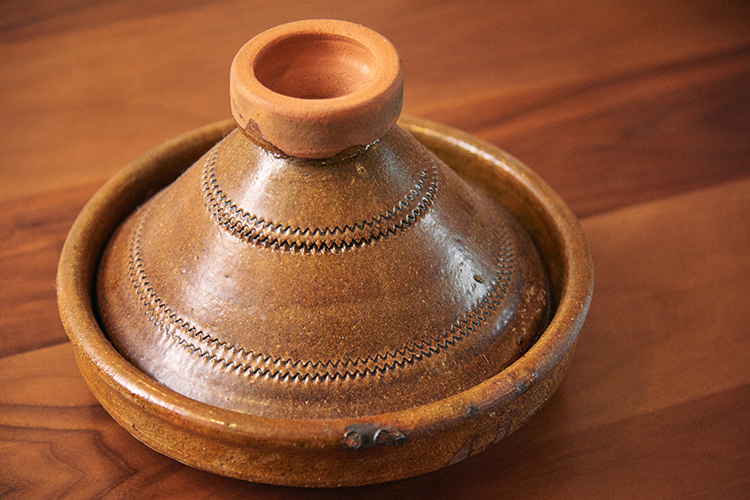
A tagine that Atsuko acquired in Morocco. The thick walls prevent food from burning, bringing out the flavor of the ingredients with no added water.
“I want to try foods I’ve never eaten. That’s why I’m fascinated by all the world’s cuisines.”
Atsuko, who was born and raised in Minamisoma, Fukushima Prefecture, grew up surrounded by the area’s rich culinary traditions. Food was her passion, and when she was in her last year of high school, she decided she wanted to study nothing else. She went on to major in nutrition and food science at a junior college. Meanwhile, she worked in the food services industry on the side; then, after graduating, she gained experience preparing food in many a restaurant kitchen.
“I was approached by restaurants of all stripes — Japanese, Korean, Italian, you name it — and worked in their kitchens. There were no decent cooking schools in Fukushima back then, so being able to learn about different cuisines on the job was a valuable experience for me.”
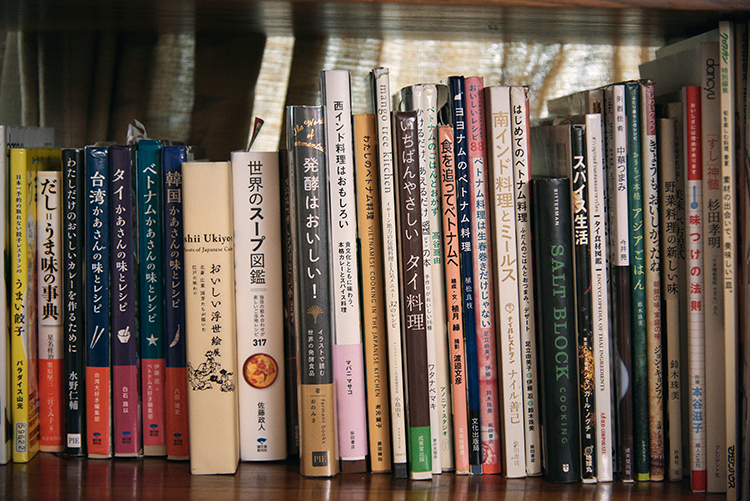
Atsuko’s bookshelves are lined with tomes about the world’s cuisines.
From the outset of her career, Atsuko has always been motivated by a desire to try foods she’s never eaten before. That quality served her well after she moved to Tokyo to take charge of menu development at a soup bar chain. There, she created numerous menu items incorporating elements from a wide array of food cultures.
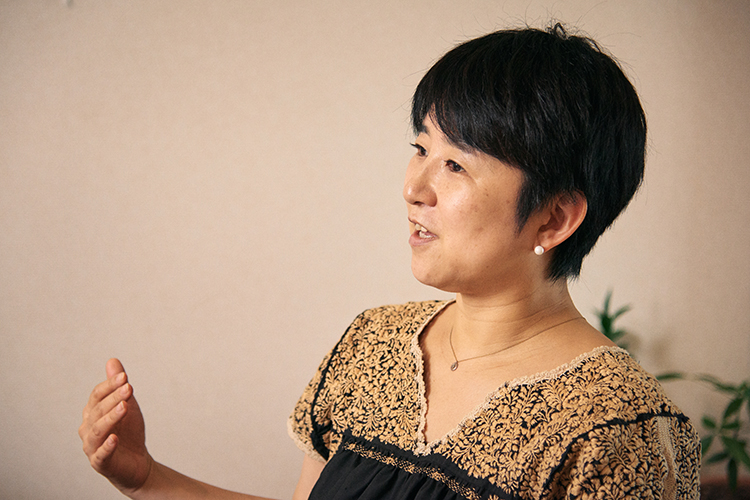
Food planner Kori Atsuko
For Atsuko, traveling is a vital source of inspiration as a recipe developer.
“Mozuku seaweed and okra soup, one of my first creations, brings back memories of when I visited a remote beach on the island of Kumejima in Okinawa. A little boy who must have been about three years old and I guess his father were gathering mozuku seaweed floating in the pristine ocean. That scene stuck with me, so I decided to concoct a mozuku soup. The ingredients were Okinawan mozuku plus okra and salt-cured pork, and the stock was made from skipjack and kombu (kelp). It was recipe inspired by something I saw on my travels.”
Before the Covid pandemic, Atsuko headed abroad at least eight times a year. She typically travels with a large group of friends and fellow foodies. Traveling in numbers lets you experience more on your trip, Atsuko says. You can order more dishes at the restaurant. You can buy foodstuffs in bulk at the market to divide up among yourselves. And you can share in what the others have discovered in the way of food.
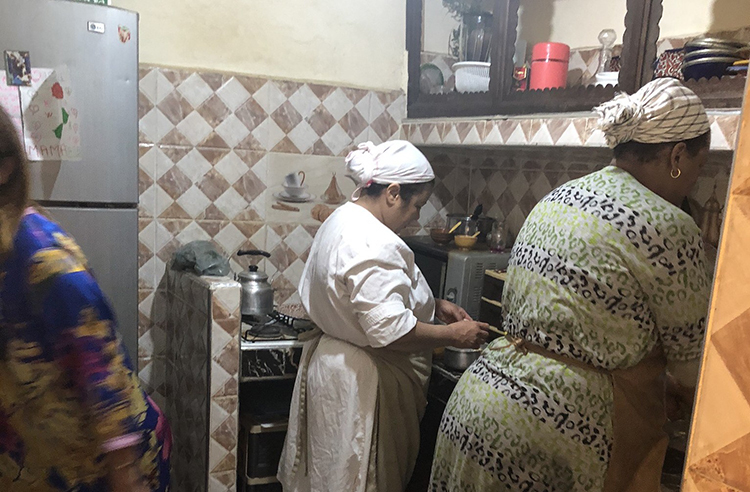
In Morocco. Atsuko even learns cooking from the locals in the places she visits.
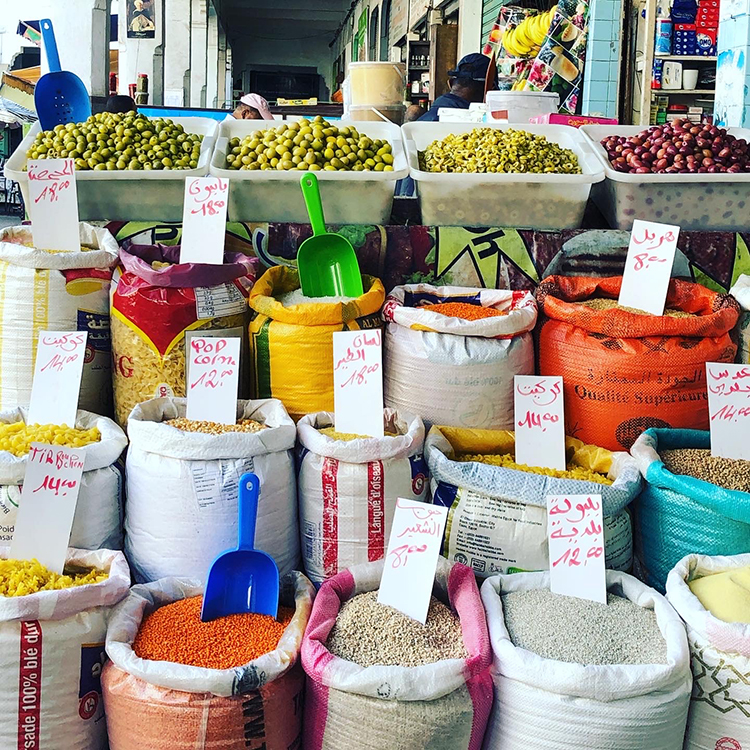
No visit would be complete without a walk through the local market.
“Most of us are experienced travelers, so we meet up at our destination and afterwards head home separately. We each take whatever airline we like, and once we’ve touched bases, we each follow our own itinerary. Young people are always welcome to join us, because they’re an extra belly at the table. Our largest tour so far was I guess thirteen people, when we visited Taipei. It’s a lot of fun to sit around the table in a huge group and enjoy a plethora of foods.”
Atsuko doesn’t just enjoy visiting restaurants with a large group of friends. She even cooks on her travels.
“On a visit to the Basque Country of Spain, seven of us rented an apartment with kitchen in a place called Bilbao. There we prepared meals for ourselves with local ingredients. We also used the place to make processed foods to take home to Japan. For example, we made tomato sauce by cooking down locally grown tomatoes that we bought at the market. That apartment was great.
“We once held a workshop in Finland. We’d gone picking mushrooms, but we unexpectedly got a large haul of berries, so we all made jam and bottled it. That’s the kind of invaluable experience that money can’t buy.
The fermented foods that Atsuko has come across on her travels often prove handy in her kitchen.
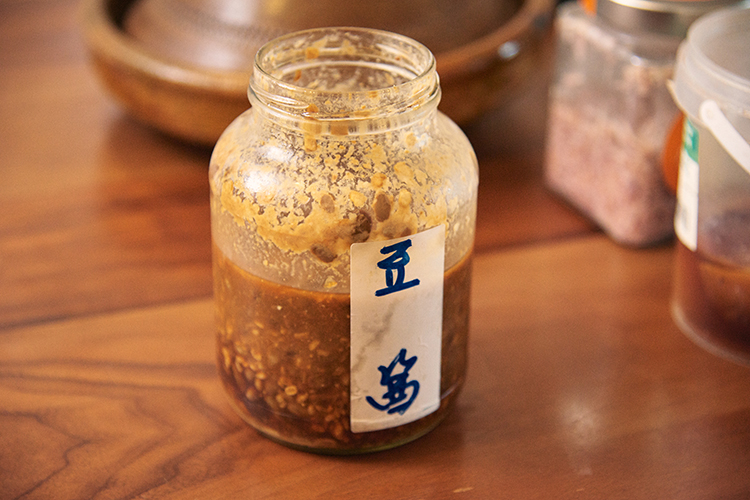
A bottle of handcrafted bean paste acquired at a Taipei market
“I was once at a market in Taipei, and there among the mass-produced condiments I came across a bottle with a handwritten label reading, ‘Bean Paste.’ I was so intrigued I had to ask about it. Well, it was made by the fellow who owned the shop. I bought it to try it out, and it was absolutely delicious. It’s a seasoning made from fermented beans. It works wonders when used to flavor stir-fried vegetables.”
In Morocco, Atsuko discovered preserved lemons, a fermented condiment commonly used in North Africa. Preserved lemons are made by pickling lemons in brine and letting them ferment. Atsuko bought a batch on her visit to the country and brought it home with her to Japan. And it’s still going strong. She keeps adding more lemons and salt to it before it runs out.
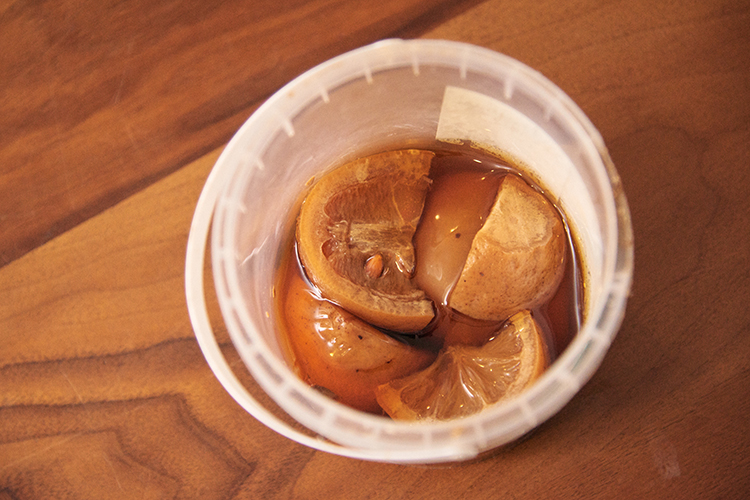
Atsuko’s batch of preserved lemons, which she keeps going by adding more lemons and salt
“For a truly delicious meal, marinate chicken in preserved lemons, garlic, and Italian parsley, add potatoes, carrots, and zucchini, and cook them in a tagine with no added water. The potatoes in particular taste exquisite! Nothing cooks like a tagine. All the flavors penetrate deep within, bringing out the full potential of the ingredients.”
As an experiment, Atsuko once tried making exactly the same North African recipe using a French-made waterless cooking pot and the tagine she picked up on her visit. The version cooked in the tagine was the clear winner.
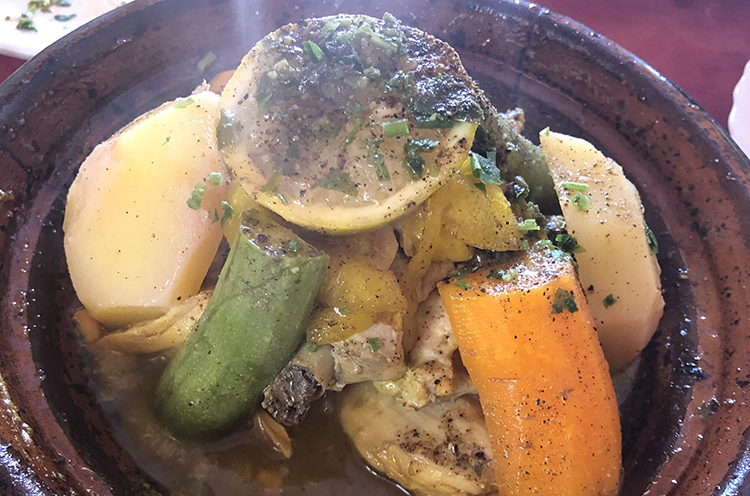
The chicken tagine Atsuko enjoyed in Morocco
“I like to be observant on my travels. For example, in Japan an earthenware mortar called a suribachi is used to grind ingredients, but in Thailand they use a krok hin or stone mortar. In Mexico and South India they use a flat stone called a metate. I like to observe how the local people use food preparation utensils unique to their country. It’s fun to compare how methods differ from country to country.”
Now that she’s a freelancer, Atsuko conducts online cooking classes alongside her menu development work. With traveling overseas out of the question these days due to Covid, she’s thinking of drawing up a detailed timeline comparing the world’s food cultures.
“I’d love to create a chronology of food cultures that told you at a glance what was happening in, say, Vietnam when such-and-such was happening in Portugal. That’s still just a personal fantasy, though. I could never do it alone, of course. I’d need to enlist the aid of people with expertise in different cuisines. But it would certainly be great fun.”
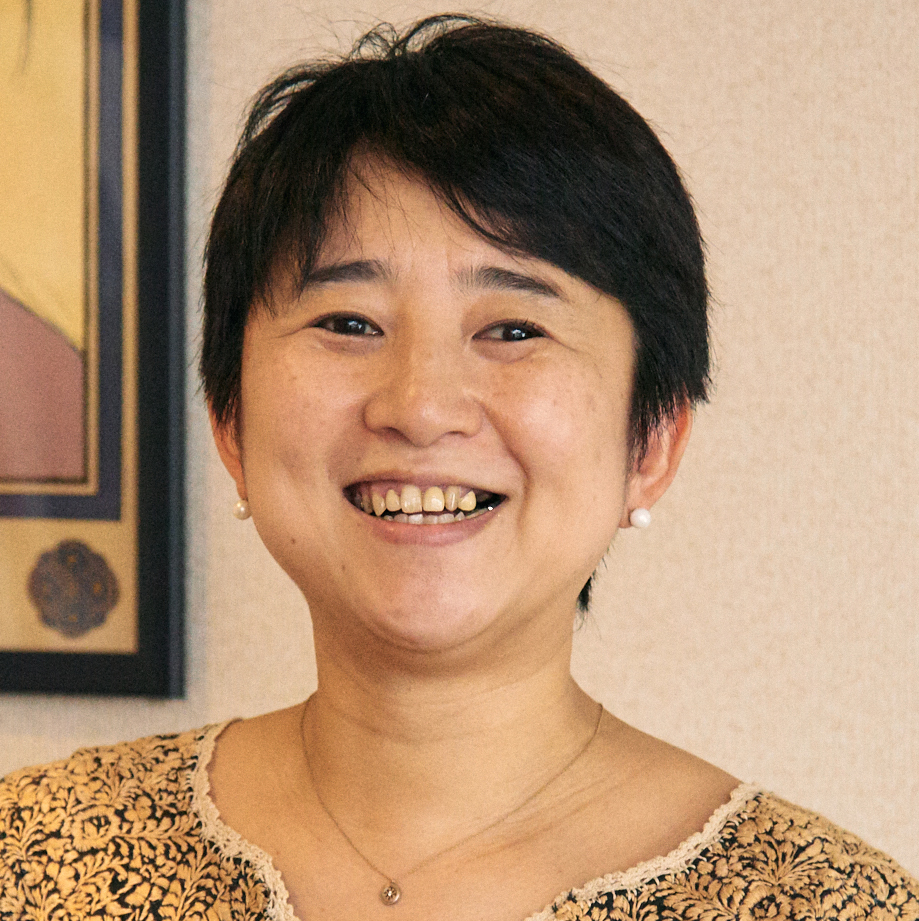
Food planner and dietitian
Food planner and dietitian
Fukushima native Koori Atsuko began her career in the restaurant sector before joining Smiles Co., Ltd., which owns Soup Stock Tokyo, in 2004. She developed virtually the entire menu of the well-known soup bar chain. Having turned freelance in 2017, she now makes a living from travel and food, organizing members-only workshops and gourmet tours with the Traveling Kitchen Saka no Ue. She is the author of Super Delicious Beef Tendon Recipes for the Patient Cook (published by Sansai Books).